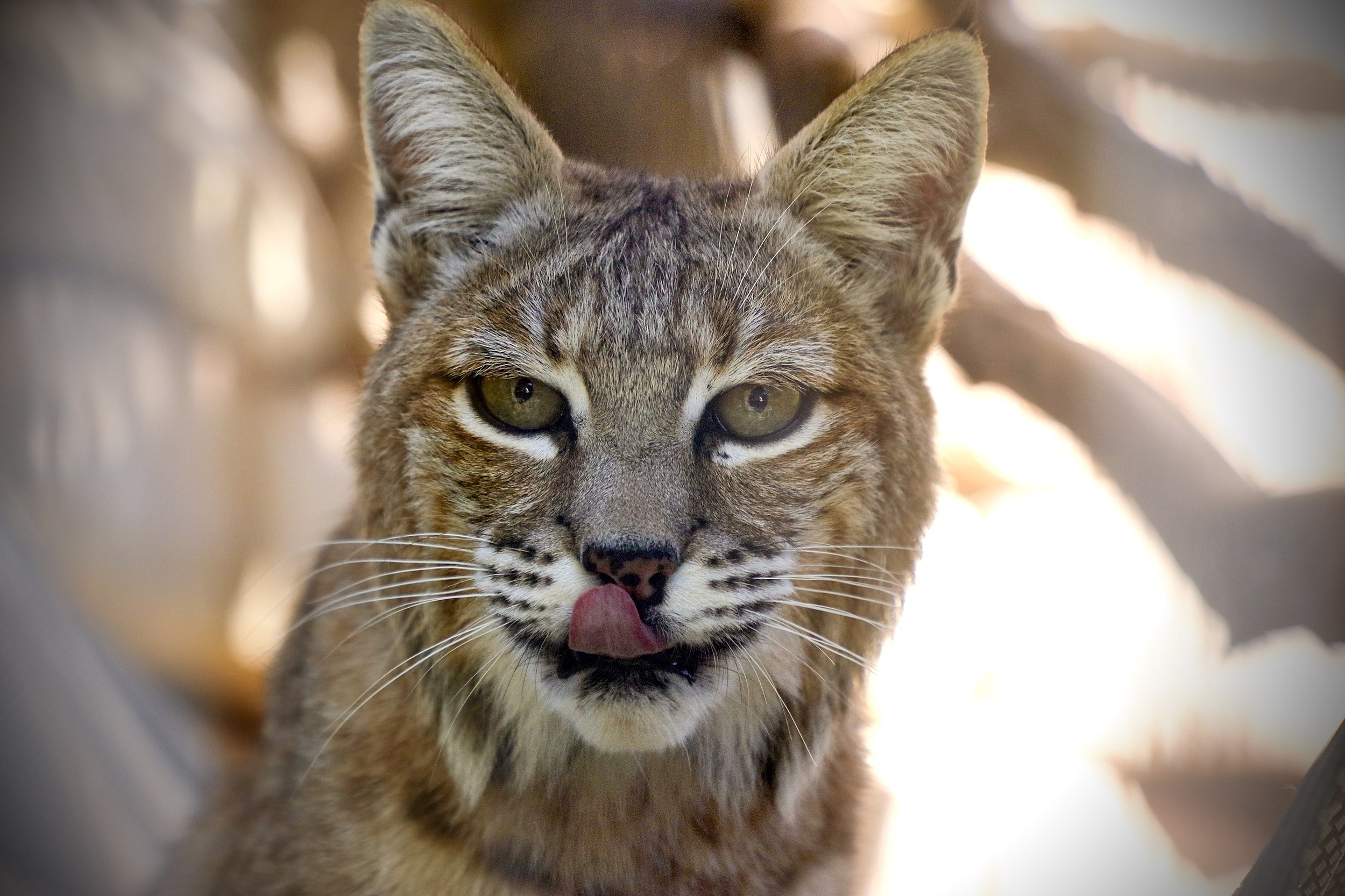Our hours for Mar 9, 2025: 9:00 AM-5:00 PM


The bobcat is the most abundant wildcat in the United States and has the greatest range of all native North American cats. They can have a home range as large as 20 square miles and will often guard several dens within that area.

They are excellent swimmers, climbers, hunters, and stalkers. They’re also incredible jumpers. Able to clear 12 feet in a single bound, the cats can easily jump across narrow waterways. The felines have also been known to pounce onto unwary deer from overhanging tree limbs.
The bobcat is a medium-sized wild cat found throughout North America. This elusive feline is known for its distinctive tufted ears and short “bobbed” tail, which gives it its name.
The bobcat is a medium-sized wild cat, typically weighing between 15 and 30 pounds. They have a stocky, muscular build with short legs and a short, “bobbed” tail that is about 6 inches long. Their coat is usually brown or gray with black spots, and their ears are tufted with black hair. Bobcats have sharp retractable claws, which they use to climb trees and catch prey.
Bobcats can be found throughout North America, from southern Canada to northern Mexico. They prefer habitats with dense vegetation, such as forests, swamps, and deserts. They are also known to inhabit suburban and urban areas, where they can find food and shelter.
Bobcats are solitary creatures and are most active at night. They are excellent hunters and are known to prey on a variety of animals, including rabbits, squirrels, birds, and rodents. They are also capable of taking down larger prey such as deer or domestic livestock. Bobcats are territorial and will mark their boundaries with urine and feces.
The bobcat is not currently considered endangered, although it is protected in some areas. They were once heavily hunted for their fur, but hunting restrictions have helped stabilize populations. Habitat loss and fragmentation are the biggest threats to bobcats now, as human development can disrupt their territory and make it harder for them to find food and shelter.
If you’re interested in seeing a bobcat in person, come visit our zoo! Our bobcat exhibit is home to two of these elusive cats, where you can observe them in their natural habitat. We are committed to the conservation and protection of these fascinating creatures and are proud to have them as part of our collection.